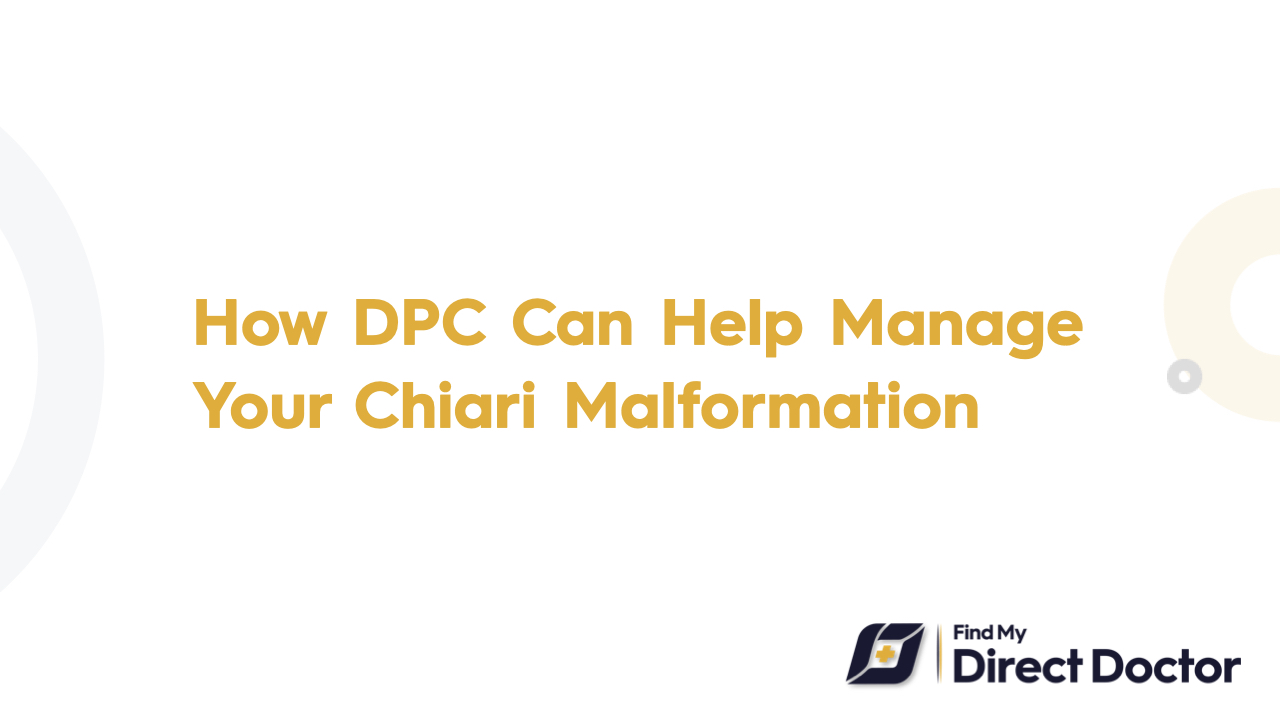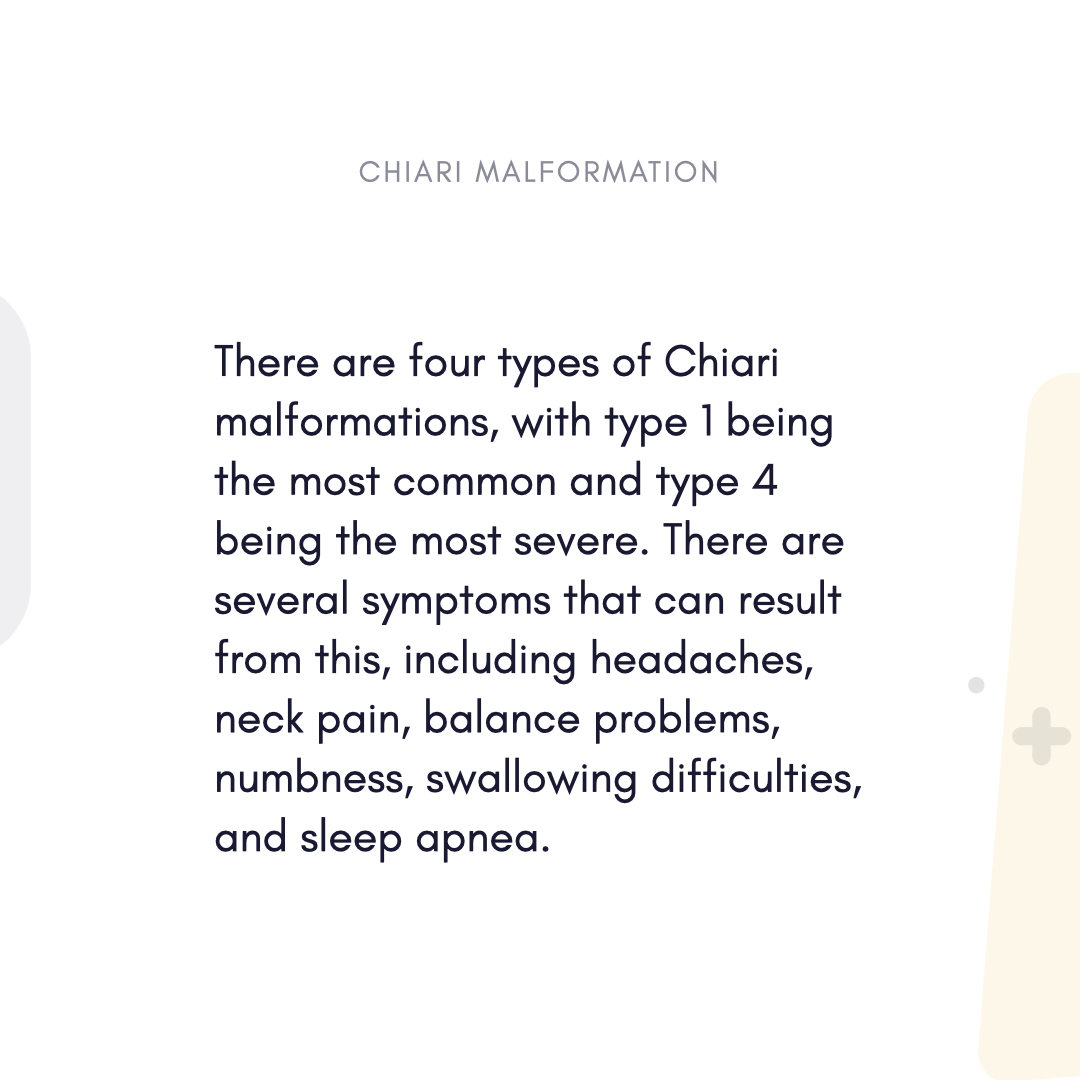Chiari Malformation and Direct Primary Care (DPC): Personalized, Proactive Neurological Support
Chiari malformation (CM) is a structural defect whereby the cerebellar tonsils extend into the foramen magnum, often causing crippling headaches, dizziness, and neurological abnormalities. While extreme cases may call for surgery, ongoing treatment calls for careful symptom monitoring, multidisciplinary collaboration, and compassionate support. Direct Primary Care (DPC), a membership model whereby patients pay a flat fee straight to their provider, offers easily available, patient-centered treatment fit for CM's complexity. DPC guides patients in negotiating this challenging disease by:

DPC’s Rapid Symptom Assessment (Improved Chiari Malformation Management)
- Offer same-day/next-day visits to assess flare-ups (e.g., headaches triggered by coughing, neck pain, balance issues).
- Rule out disorders like syringomyelia (spinal cord cysts) and adjust prescriptions.
- Early intervention reduces non-urgent ER visits.
Perfect Synchronization With Specialists (Collaborative Care)
- Work with neurosurgeons/neurologists to track post-surgical recovery and interpret MRI/CT results.
- Follow evidence-based guidelines and advocate for patients to ensure comprehensive symptom histories.
Budgeting Affordability & Transparency (Cost Clarity)
- Subscription model covers regular check-ins, basic labs, and care coordination—eliminating surprise billing.
- Patients save on repeat imaging and specialist co-pays for long-term follow-up.
DPC Customised Chiari Malformation Correction (Tailored Plans)
- Symptom diaries: Track headache patterns, triggers (straining, poor posture), and drug reactions.
- Non-opioid treatments: Prescribe NSAIDs (where safe), muscle relaxants, anticonvulsants, or physical therapy for neuropathic pain.
- Post-operative support: Coordinate rehabilitation, monitor for complications (CSF leaks, infections), and integrate chronic pain/fatigue management.
- Address comorbidities like sleep apnea, Ehlers-Danlos syndrome, or POTS with lifestyle changes/specialist referrals.
- Provide counseling/referrals for anxiety/depression linked to chronic pain or disability.
Why DPC Approaches Chiari Malformation? (Long-Term Benefits)
- Long-term relationships: Spot subtle symptom changes for early crisis prevention.
- Active observation: Regular wellness visits track neurological function, nutrition, and mental health to reduce hospitalizations.
- Teach self-advocacy: Identify "red flags" (e.g., sudden weakness, vision changes) and report symptoms effectively.
DPC Prevents Diagnostic Delays (Early Intervention)
- Fast access ensures timely evaluation of chronic headaches, reducing misdiagnosis (e.g., migraines vs. CM).
- Advise safe activities (avoid high-impact exercise, heavy lifting) to prevent symptom aggravation.
- Non-opioid pain strategies: Prioritize physical therapy/anticonvulsants over dependency risks.
- Telehealth flexibility: Virtual follow-ups accommodate mobility issues or fatigue.
DPC’s Contribution to Treatment Guidelines (NINDS Alignment)
- Follow NINDS recommendations for monitoring, referrals, and care coordination.
- Combine complementary therapies (yoga, acupuncture) with conventional treatments for holistic pain management.
- Educate caregivers on daily care routines, adaptive tools, and emergency signs.
Why DPC Perfectly Fits Chiari Malformation? (Model Advantages)
- Faster specialist coordination: Bypass insurance delays for MRI pre-approvals or neurosurgical consultations.
- Customize plans for patient priorities (mobility preservation, pain management) and CM subtypes (type I vs. II).
- Empowerment through education: Provide tools for assistive technologies, support groups, or clinical trials.
Final Notes (Comprehensive Care)
- DPC combines proactive monitoring, multidisciplinary coordination, and compassionate support to help CM patients confidently navigate their condition.
- Ensures timely, personalized treatment aligned with individual needs and evolving symptoms.






